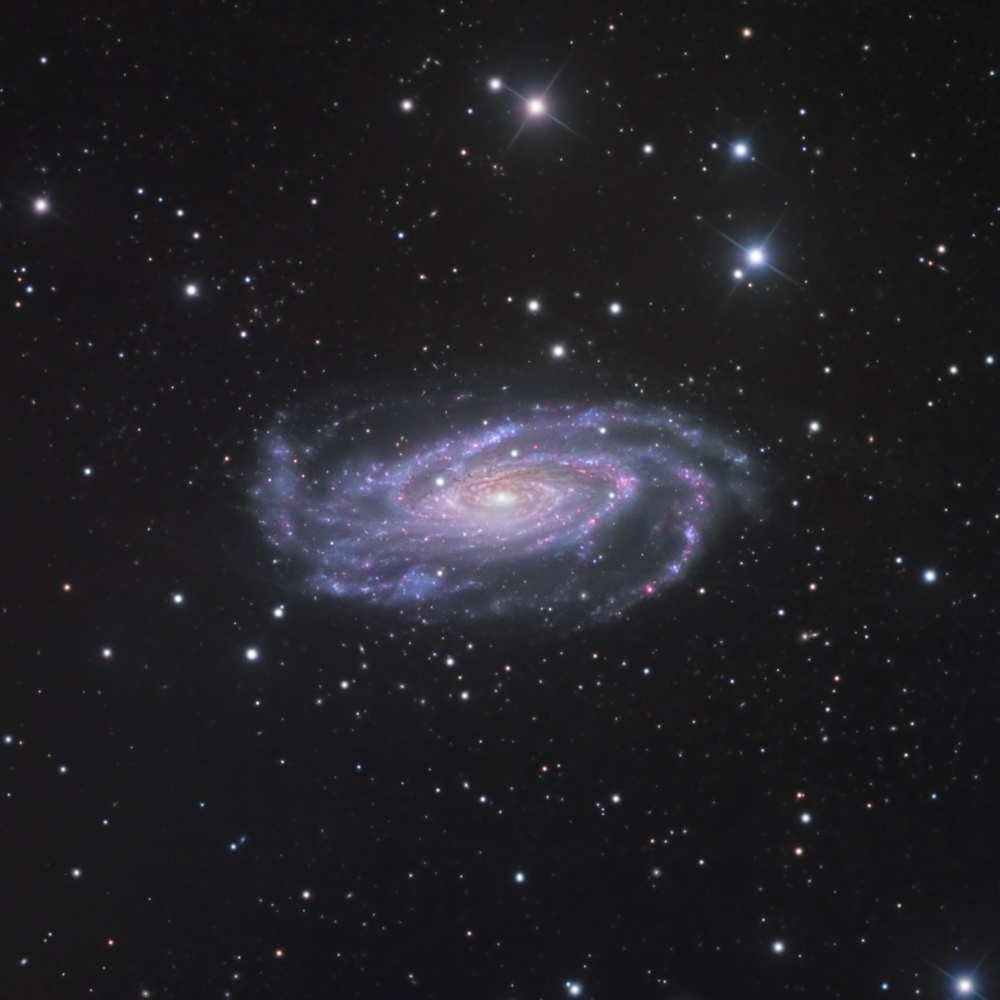
NGC 5033 is a large spiral galaxy, somewhere between 38 and 60 million light years away from us (quite a bit of wiggle room there!).
The pink regions (of which there are many) are star-forming regions, and the blue arms contain hot young stars. The galaxy is somewhat deformed (note, for instance, that the spiral arms on
the left part of the galaxy are "bent" up), presumably from gravitational interaction(s) in the past with galactic neighbors. An examination of the full-resolution version will show lots of galaxies
in the background (pretty much all the oblong or fuzzy things), some of which may be dwarf galaxies near NGC 5033.
The bright star at the left edge of the uncropped photo is a magnitude 6.5 star. That's quite bright, especially when taking long exposures; it was a challenge to tame it a bit. The entire field of the photo
is about the same width as a full moon. If the galaxy is 43 million light years away (a fairly common number given by scientific articles on the galaxy), it has a diameter of about 136,000 light years,
similar to our Milky Way galaxy.
Copyright 2022 Mark de Regt